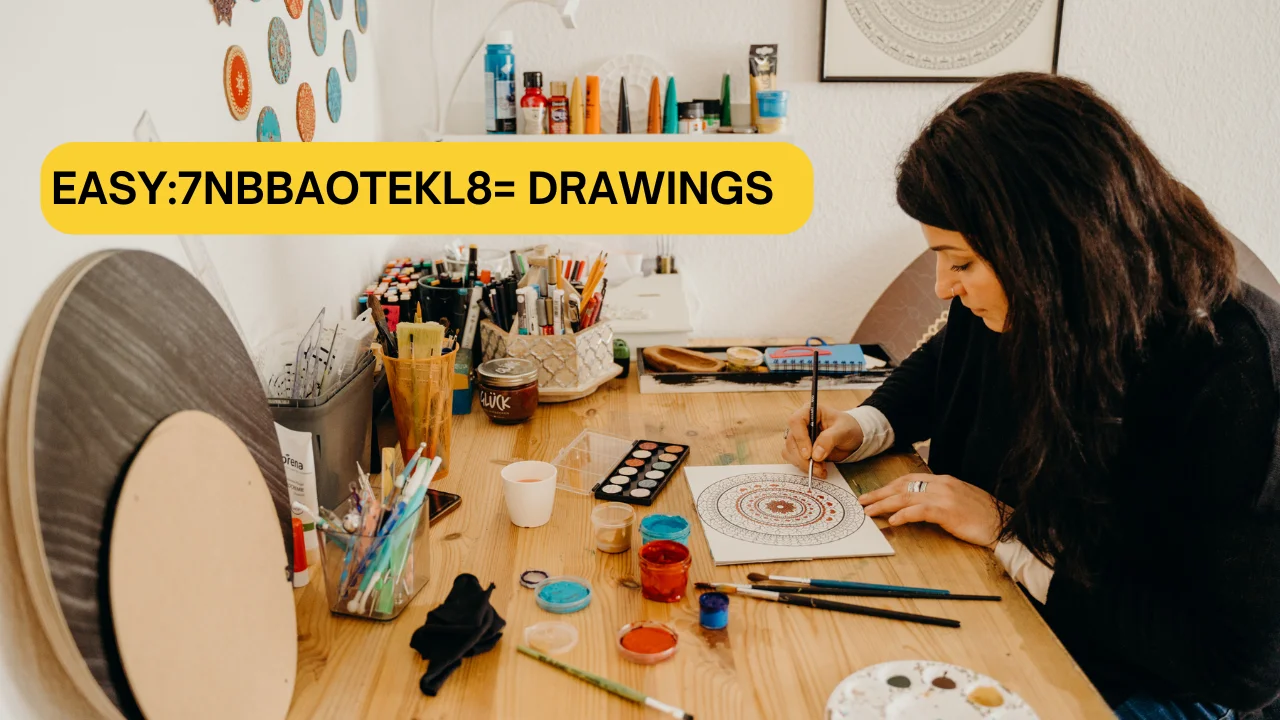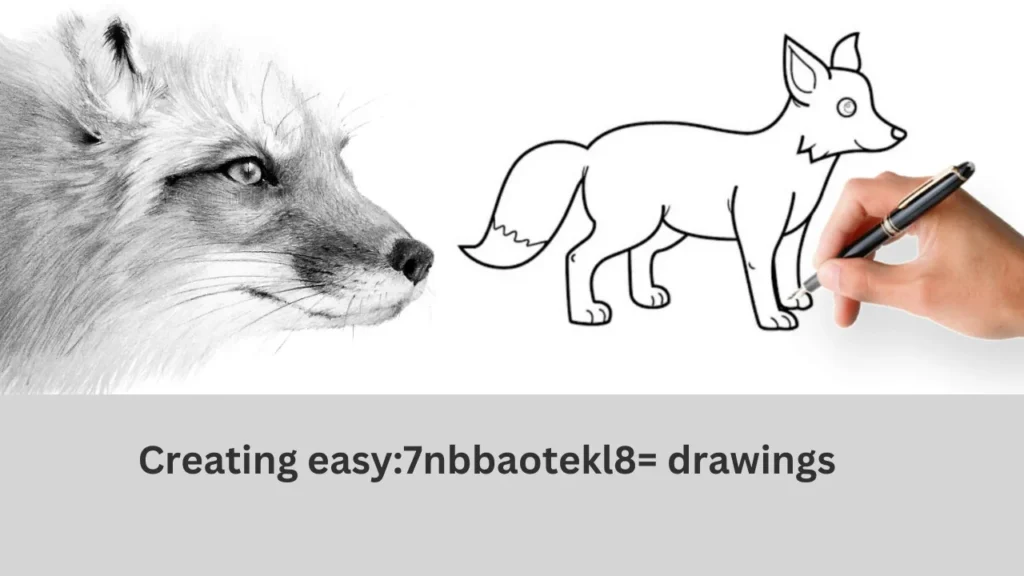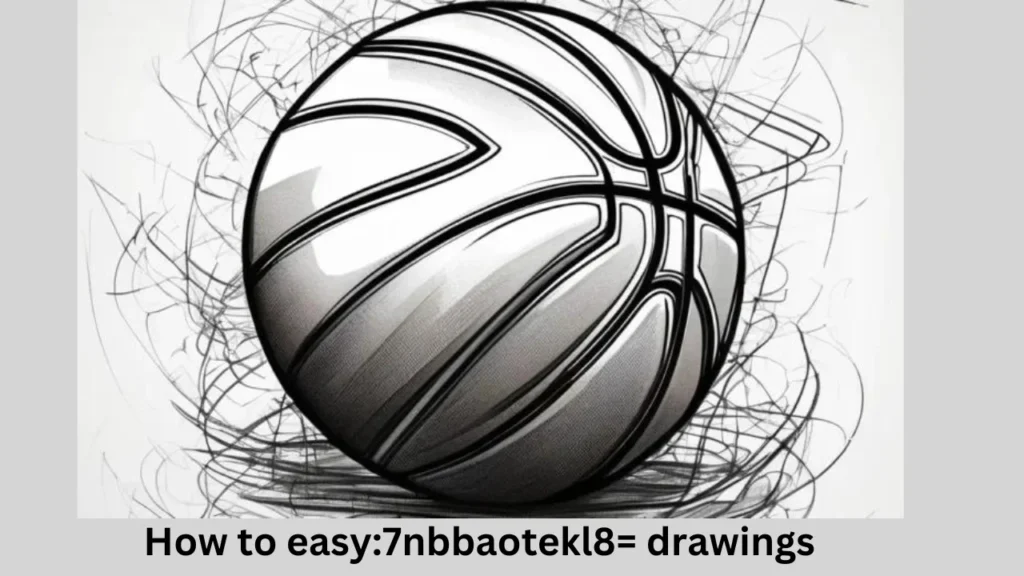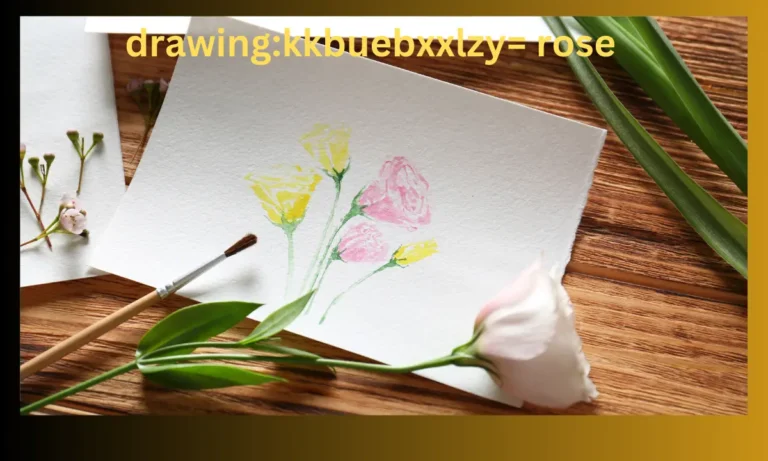Easy:7nbbaotekl8= Drawings Artistic Journey With Confidence

The easy:7nbbaotekl8= drawings is an art form that has captivated people for centuries. It’s not just a hobby but a way to express emotions, ideas, and stories without the need for words. For beginners, the thought of creating a masterpiece might seem daunting. However, easy:7nbbaotekl8= drawings can help you start your artistic journey with confidence. In this article, we’ll explore what makes a drawing easy and how anyone can create beautiful artwork with simple techniques.
What Are easy:7nbbaotekl8= Drawings
Easy:7nbbaotekl8= drawings are simplified forms of art that are approachable for beginners. These drawings often focus on basic shapes, lines, and patterns, making them accessible to anyone regardless of skill level. By starting with , you can gradually build your skills, understanding of form, and confidence as an artist. Whether you’re a child, teenager, or adult, these drawings offer a perfect way to explore your creativity.
Why Start with easy:7nbbaotekl8= Drawings
Starting with easy drawings has several benefits. First, it allows you to learn the fundamentals of drawing without feeling overwhelmed. You can practice basic techniques like shading, perspective, and proportion in a manageable way. Additionally, are typically quick to complete, providing a sense of accomplishment that encourages you to keep going. As you gain more experience, you can challenge yourself with more complex subjects, but the foundation you build with easy drawings will always be valuable.
Basic Techniques for easy:7nbbaotekl8= Drawings
Start with Simple Shapes:
Most objects can be broken down into simple shapes like circles, squares, and triangles. By focusing on these shapes, you can create a basic outline of your subject. For example, drawing a simple house might start with a square for the building and a triangle for the roof. Once the basic shapes are in place, you can add details to make the drawing more realistic.
Use Light Lines:
When you begin your drawing, use light, gentle strokes to create the initial shapes and outlines. This approach allows you to easily erase mistakes and adjust proportions before committing to the final lines. It often rely on this technique to ensure that the final product looks clean and polished.
Practice Shading:
Shading adds depth and dimension to your drawings. By practicing basic shading techniques, you can make your appear more lifelike. Start by identifying the light source in your drawing and shading the areas that would naturally be in shadow. Use a range of pressure with your pencil to create light and dark areas.
Experiment with Patterns:
Adding patterns to your drawings can make them more interesting without adding complexity. Simple patterns like dots, stripes, or zigzags can fill empty spaces and enhance the overall design. It often incorporate patterns to create texture and visual appeal.
Creating easy:7nbbaotekl8= drawings

To help you get started, here’s a step-by-step guide to creating a simple drawing of a tree:
Draw the Trunk:
Begin by drawing two parallel lines for the trunk of the tree. Make the lines slightly wider at the base to create a natural look.
Add Branches:
Draw several lines branching out from the top of the trunk. These lines can be curved or straight, depending on the type of tree you want to create.
Create the Canopy:
Draw a large, rounded shape around the top of the branches to represent the canopy of leaves. This shape can be an oval, circle, or irregular blob, depending on your style.
Add Details:
Inside the canopy, draw small, curved lines to represent leaves. You can also add texture to the trunk by drawing small horizontal lines.
Shade the Tree:
Identify the light source and shade the opposite side of the trunk and branches. Lightly shade the bottom of the canopy to create depth.
Finalize the Drawing:
Go over your lines to make them more defined. Erase any unnecessary guidelines and add any final touches, such as additional leaves or grass at the base.
The Importance of Practice in Easy:7nbbaotekl8= Drawings
As with any skill, practice is key to improving your drawing abilities. The more you practice , the more comfortable you’ll become with different techniques and styles. Set aside time each day or week to draw, even if it’s just for a few minutes. Over time, you’ll notice significant improvements in your work, and you’ll feel more confident tackling more complex subjects.
Common Mistakes to Avoid in Easy:7nbbaotekl8= Drawings
When starting with , it’s important to be aware of common mistakes that can hinder your progress:
Overcomplicating the Drawing:
Stick to simple shapes and lines when you’re just starting out. Trying to add too much detail can lead to frustration and discouragement.
Ignoring Proportions:
Pay attention to the proportions of your drawing, even if it’s a simple subject. Incorrect proportions can make the drawing look unbalanced or unrealistic.
Not Using Reference Images:
Reference images are incredibly helpful, especially for beginners. They provide a visual guide and help you understand how different elements should look in your drawing.
How to easy:7nbbaotekl8= drawings

Creating is a fun and accessible way to start your artistic journey. Here’s a simple guide to help you create these drawings step by step:
Gather Your Materials
Before you start drawing, make sure you have the necessary materials:
A variety of pencils with different lead hardness (e.g., HB, 2B) will give you flexibility in shading and line work.
A good quality eraser will help you correct any mistakes.
Any drawing paper will work, but a smooth surface is ideal for beginners.
Keep your pencils sharp for precise lines.
Choose a Simple Subject
Start with a simple subject that can be broken down into basic shapes. For example, you might choose to draw:
A flower
A tree
A house
A cartoon character
Break the Subject into Basic Shapes
Identify the basic shapes that make up your subject. Most objects can be simplified into circles, squares, rectangles, and triangles. For example:
A tree might start with a rectangle for the trunk and an oval for the canopy.
A flower can begin with a circle for the center and ovals for the petals.
Draw the Basic Outline
Using light strokes, sketch the basic shapes on your paper. Don’t worry about getting everything perfect right away; this is just the foundation of your drawing. It often begin with these simple outlines to build up the drawing step by step.
Add Details
Once you have the basic shapes in place, start adding details to your drawing. For a tree, you might draw the branches extending from the trunk and add leaves in the canopy. For a flower, you could add more petals and a stem. Keep the details simple to maintain the ease of the drawing.
Shade and Add Texture
Shading adds depth and dimension to your drawing. Identify the light source and shade the opposite areas to create shadows. You can also add texture by drawing small patterns, such as lines or dots, to represent different surfaces (e.g., bark on a tree or petals on a flower).
Practice Makes Perfect
The more you practice , the better you’ll get. Don’t be afraid to experiment with different subjects and techniques. Each drawing you complete will help you develop your skills and gain confidence in your abilities.
With these steps, you can start creating and gradually improve your drawing skills. Enjoy the process, and remember that the key to improvement is consistent practice and a willingness to learn from your mistakes.
Uses of easy:7nbbaotekl8= drawings
| Use Case | Description |
|---|---|
| Learning Tool for Beginners | Helps new artists build foundational skills like shading, proportion, and perspective. |
| Stress Relief and Relaxation | Offers a therapeutic activity to relax and unwind, focusing on the process over the outcome. |
| Educational Uses | Assists in teaching basic art concepts and can be integrated into various subjects like language arts and science. |
| Creative Exploration | Allows experienced artists to experiment with new ideas and techniques in a low-pressure environment. |
| Craft and DIY Projects | Can be used in embroidery, greeting cards, and scrapbooking due to their simplicity and versatility. |
| Decorative Purposes | Simple drawings can be framed as minimalist art or used as digital backgrounds. |
| Interactive and Social Activities | Encourages group creativity and collaboration in classrooms, workshops, or social gatherings. |
| Improving Motor Skills | Aids in the development of fine motor skills, especially in children or those recovering from motor impairments. |
| Building Confidence | Provides a sense of accomplishment by completing achievable, simple drawings. |
| Online Content Creation | Serves as valuable content for blogs, social media, and tutorials, helping build an online presence. |
Learning Tool for Beginners
Easy:7nbbaotekl8= drawings are perfect for those who are just starting out with drawing. They focus on basic shapes, lines, and simple techniques, making them an ideal starting point for beginners. These drawings help new artists build foundational skills, such as understanding proportions, shading, and perspective, without feeling overwhelmed by complexity.
Stress Relief and Relaxation
Drawing can be a therapeutic activity, and particularly effective in this regard. Their simplicity allows you to focus on the process rather than worrying about the outcome, making them a great way to relax and unwind. Many people use easy drawings as a form of meditation or mindfulness practice.
Educational Uses
Teachers and educators can use as part of art lessons for young students. These drawings can be used to teach basic art concepts in a way that’s accessible and engaging. Additionally, easy drawings can be incorporated into other subjects, such as illustrating stories in language arts or creating diagrams in science classes.
Creative Exploration
For more experienced artists, easy:7nbbaotekl8= drawings can serve as a way to explore new ideas and styles without committing to a large, complex project. These simple drawings can act as sketches or preliminary studies for more detailed works. They allow artists to experiment with composition, technique, and color in a low-pressure environment.
Craft and DIY Projects
Easy:7nbbaotekl8= drawings can be used in various craft and DIY projects. For example, these drawings can be transferred onto fabric for embroidery, used as designs for greeting cards, or incorporated into scrapbooking layouts. Their simplicity makes them versatile for different creative projects.
Decorative Purposes
Even simple drawings can be visually appealing and can be used for decoration.can be framed and hung as minimalist art pieces in a home or office. They can also be used in digital formats, such as backgrounds for phone screens, social media posts, or website graphics.
Interactive and Social Activities
Creating easy drawings can be a fun group activity. Whether it’s in a classroom, at a workshop, or during a social gathering, people can work on these drawings together. This can foster a sense of community and provide a shared creative experience. These drawings can also be part of collaborative art projects where each participant adds their own simple contribution to a larger piece.
Online Content Creation
In the digital age, can be used as content for blogs, social media, and other online platforms. Artists and creators can share tutorials, time-lapse videos, or step-by-step guides to these drawings, offering valuable content to their audience while building their online presence.
Frequently Asked Questions
What are easy:7nbbaotekl8= drawings?
Easy:7nbbaotekl8= drawings are simple, beginner-friendly drawings that focus on basic shapes and techniques. They are designed to be approachable and easy to complete, making them perfect for those new to drawing.
Who can benefit from easy:7nbbaotekl8= drawings?
These drawings are ideal for beginners, children, art students, and anyone looking to practice fundamental drawing skills or engage in a relaxing, creative activity.
What materials do I need for easy:7nbbaotekl8= drawings?
All you need are basic drawing materials like pencils, an eraser, drawing paper, and a sharpener to get started with easy:7nbbaotekl8= drawings.
Conclusion
Easy:7nbbaotekl8= drawings are an excellent starting point for anyone interested in learning to draw. By focusing on simple shapes, light lines, shading, and patterns, you can create beautiful artwork that boosts your confidence and hones your skills. Remember, the key to success in drawing is practice, so don’t be afraid to make mistakes and learn from them.






